EdSource asked more than 40 education leaders — from John Affeldt to Edgar Zazueta — representing all segments of California’s education system to comment on Gov. Newsom’s sweeping budget proposals, which will set the direction for the state’s education priorities. Scroll down and click on the photos to read their thought-provoking responses on the governor’s plans for early education, K-12 and postsecondary education.
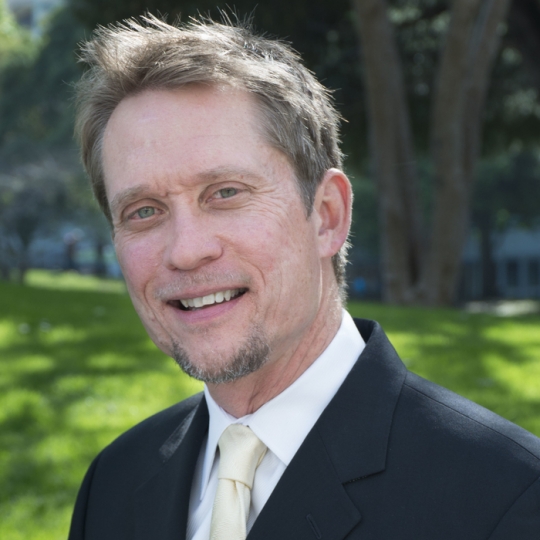
John Affeldt
Managing Attorney at Public Advocates
What impressed you the most about Gov. Newsom’s budget proposal?
I was thrilled to see the governor proposed a $900 million investment into improving the quality of the teacher workforce, particularly in high-poverty schools concentrated with students of color. Since we filed the Williams case two decades ago, we have been waiting to see a governor make such a serious investment in teacher quality for our highest-need students. If I had a critique, it would be that we’d prefer to see more funds for attracting and retaining quality teachers in those schools with the highest concentrations of poverty and less on across-the-board competitive grants for professional development.
What do you feel is most notably missing, if anything?
Ultimately, the governor proposed a largely incremental, one-time increase in K-12 funding and avoided mention of the elephant in the room—the continued overall inadequacy of school funding. His State of the State last year explicitly called for a conversation on how we can sufficiently fund our schools through new state and local revenues. That conversation still needs to happen. In a year where voters will be given the opportunity to raise billions of dollars through the Schools and Community First ballot initiative, we are looking for meaningful leadership from the governor to help restore California to one of the best-funded public school systems in the nation.
John Affeldt is managing attorney for Public Advocates, a nonprofit law firm and advocacy organization that challenges the systemic causes of poverty and racial discrimination.

Elisha Smith Arrillaga
Executive Director of The Education Trust—West
What impressed you the most about Gov. Newsom’s budget proposal?
It is affirming to see Governor Newsom commit to investing in initiatives that strengthen California’s K-12 education systems. This is much-needed in our state, as we know schools serving students of color and low-income students don’t have sufficient access to STEM courses and high-quality teachers. The governor’s proposal to invest $900 million for teacher preparation and recruitment is crucial for meeting the pressing needs of schools and districts. Equipping educators with adequate resources to better serve our state’s over 6 million students — from building out STEM curriculum to better supporting English learners — is pivotal as we educate California’s future leaders.
What do you feel is most notably missing, if anything?
While the increase in funding is promising for the California Community College, Cal State University, and University of California systems, we’d like to see an explicit commitment to use base funding increases to expand enrollment and help address the capacity challenges at our higher education institutions. Additionally, a huge barrier for students attending college is being able to afford it. We need Governor Newsom’s attention to the complex college affordability challenges in our state by working closely with financial aid stakeholders to ensure students are accessing current financial aid options, while proposing solutions to reform the Cal Grant program to better meet the full cost of college.
Elisha Smith Arrillaga serves as the executive director of The Education Trust-West, a research and advocacy organization focused on educational justice and supporting the high achievement of all California students, with a particular focus on underserved students of color, low-income students, and English learners.

Sara C. Bachez
Assistant Executive Director of Governmental Relations at the California Association of School Business Officials
What impressed you the most about Gov. Newsom’s budget proposal?
We continue to applaud Governor Newsom for prioritizing funding for our students with disabilities and addressing the teacher shortage. Over the past 10 years, CASBO has been advocating to increase special education funding, sponsoring AB 3136 (O’Donnell, 2018) and AB 428 (Medina, 2019). We look forward to engaging in conversations around reform efforts that increase the special education base funding per child and strengthen support systems that ensure we are closing the achievement gap for our disadvantage students.
What do you feel is most notably missing, if anything?
The Local Control Funding Formula has created opportunities to refocus school districts’ budgets to student-centered policies, but in an environment with only cost-of-living adjustments, CASBO is concerned that strategic plans that have been created with educators and community members will experience delays in implementation until the state invests significant new funding. School districts are experiencing drastic cost increases in health care, utilities and infrastructure, and pension, which diverts limited dollars away from the classroom. CASBO supports a stronger vision that puts the state’s per pupil spending on the top 10 in the nation and support this Administration in seeking that as one of their top education goals.
Sara C. Bachez is assistant executive director of Governmental Relations at the California Association of School Business Officials, representing over 23,000 school business officials statewide on legislative matters affecting public education finance.

Peter Birdsall
Executive Director of the California County Superintendents Educational Services Association (CSESA)
What impressed you the most about Gov. Newsom’s budget proposal?
CSESA is very supportive of the governor’s proposal to provide $250 million in additional funding for special education. County superintendents annually review and approve the budgets of every school district in the state and we know that the current underfunding of special education threatens the financial stability of many of those districts.
The governor’s budget identifies critical special education issues that must be addressed: equity, inclusive practices, early intervention and staff shortages. County superintendents across the state are committed to working with the Administration and other interested parties to address these important questions.
As part of this effort, we are further encouraged by the governor’s commitment to breaking down the barriers to access Medi-Cal and providing a more consistent and seamless system to provide behavioral health benefits. Such reforms hold the potential to generate additional federal funding that substantially exceeds the $250 million increase proposed by the governor. In addition, research findings are that children are 21 times more likely to receive mental health services if they are provided on a school campus. It is critically important the school representatives are included in the Administration’s planning on how to streamline and strengthen Medi-Cal.
Peter Birdsall is executive direct of the California County Superintendents Educational Services Association, which works to strengthen the service and leadership capabilities of California’s 58 County Superintendents in support of students, schools, districts and communities.
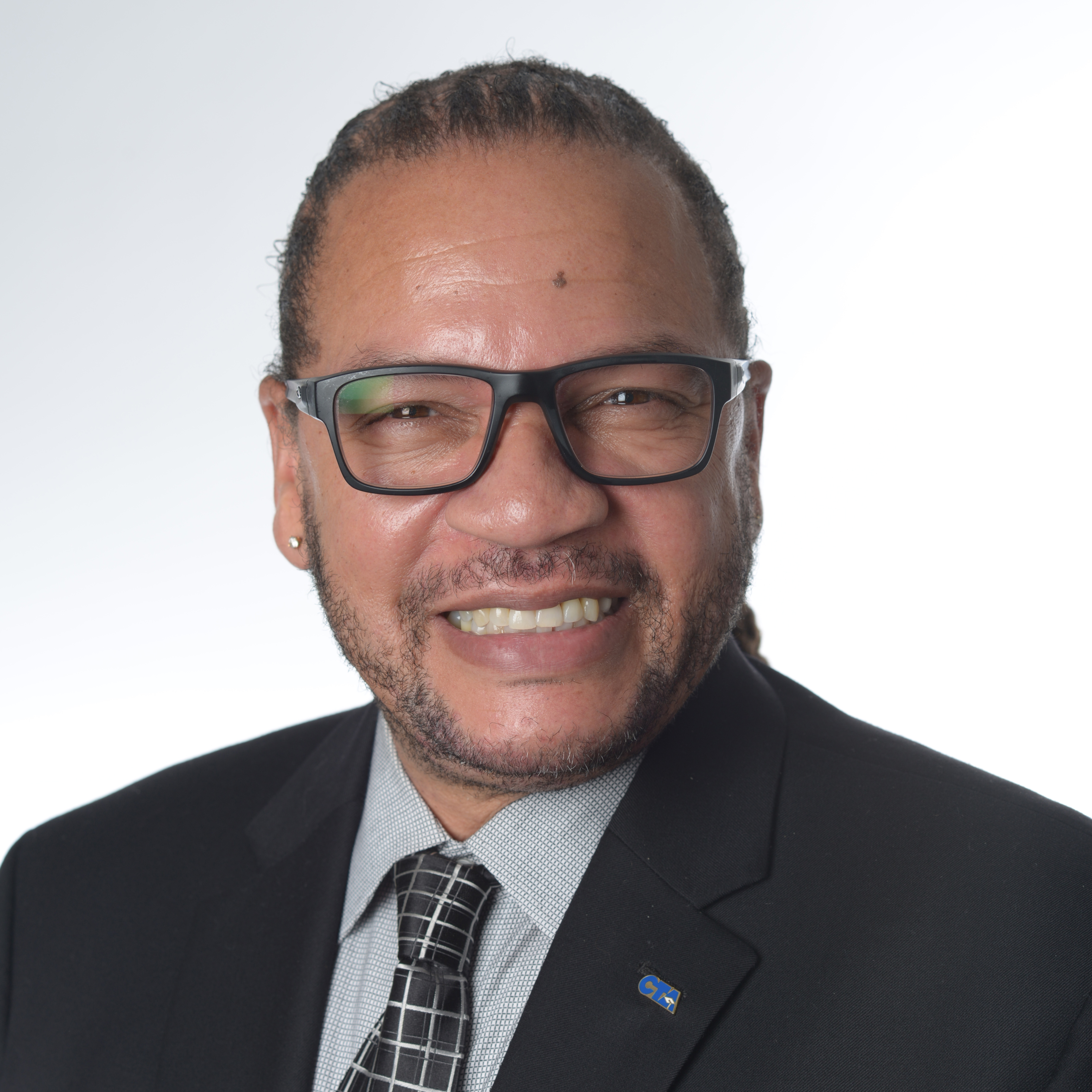
E. Toby Boyd
President of the California Teachers Association
What impressed you the most about Gov. Newsom’s budget proposal?
It’s clear that the governor recognizes the challenges facing our students and educators, and we applaud him for making strong allocations to address the needs of students and the critical teacher shortage in this state. The $900 million for attracting and recruiting educators will help us make progress toward ensuring our students have teachers who look like them and who are qualified in the areas they teach like special education, math and science.
The federal government has shortchanged our students with special needs for far too long. Governor Newsom’s $900 million proposal for special education support will help offset some of those shortfalls and help provide the resources our students need. We look forward to having fruitful conversations with the governor and the Legislature to ensure all students have the programs and resources they need to succeed.
E. Toby Boyd is president of the California Teachers Association, the membership of which includes K-12 teachers, counselors, school librarians, social workers, psychologists, and nurses as well as community college faculty and education support professionals.

Myrna Castrejón
President and CEO of the California Charter Schools Association (CCSA)
What impressed you the most about Gov. Newsom’s budget proposal?
We applaud Governor Newsom for continuing his commitment to address the needs of the whole child and improve teaching and learning in our public education system. As a long-time ally in the fight for full and fair funding for all public schools, we are happy to see new and increased investments overall in K-12 funding as well as the specific investments for charter school facilities, teachers and teacher recruitment, and special education funding reforms. These are key levers to improve student outcomes and fundamental to improving equity, access and inclusion for our neediest students.
Myrna Castrejón is president and CEO of the California Charter Schools Association, which supports and advocates for charter schools in California.

David Crane
Lecturer in Public Policy at Stanford University and President of Govern for California
What impressed you the most about Gov. Newsom’s budget proposal?
Nothing in the education proposal is impressive. Modifying LCAP forms and boosting teacher training dollars are no substitutes for liberating principals to manage schools for the benefit of students and lifting antiquated licensing rules that restrict teacher supply.
What do you feel is most notably missing, if anything?
Missing are K-12 reforms requiring schools to manage workforces and budgets for the benefit of students. Just look at SacCity Unified, where one California law is forcing layoffs of young teachers because no California law stops districts from subsidizing health costs for retirees eligible for Medicare or Obamacare who don’t need the subsidies.
David Crane is a lecturer in public policy at Stanford University and president of Govern for California, a network of more than 600 political donors in support of state lawmakers who legislate in the general interest.

Xilonin Cruz-Gonzalez
President of the California School Boards Association (CSBA)
What impressed you the most about Gov. Newsom’s budget proposal?
We appreciate that the governor’s 2020-21 budget proposal takes steps toward addressing important issues facing our public schools and applaud its emphasis on teacher preparation, community schools and funding for early intervention programs in special education. We will continue to work with the governor to help secure the more dramatic investment in public schools needed to grapple with California’s education funding crisis.
What do you feel is most notably missing, if anything?
As impressive as $3.4 billion in new revenue for public schools sounds, it actually represents a modest increase that falls far short of the funding needed to provide all California students with a high-quality education. The Getting Down to Facts II project, which assembled the nation’s top education scholars to research California’s preK-12 schools, determined the state would have to allocate an additional $26 billion annually to educate all students to the state standards. It’s past time to provide Full and Fair Funding for public schools so every student has a chance to thrive in college, career and civic life.
Xilonin Cruz-Gonzalez is president of the California School Boards Association, the nonprofit education association representing the elected officials who govern public school districts and county offices of education.
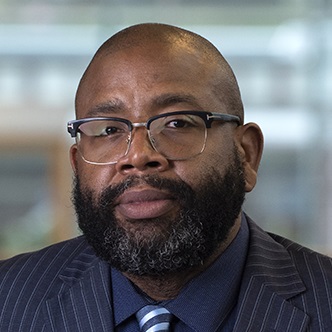
Keith Curry
President and CEO of Compton College
What impressed you the most about Gov. Newsom’s budget proposal?
As a community college president/CEO, I was impressed with the governor’s funding for facilities projects for California community colleges. Many of our community colleges have several facilities needs and to have the governor fund 24 new construction projects in the proposed budget was great. The Compton College Physical Education Complex was one of the approved projects, so we are extremely happy about that project. Also, the $11.4 million to support food pantries on community college campuses is critical as it relates to the success of our students. Overall, I felt the governor’s budget proposal was great for California community colleges.
And what do you feel is most notably missing, if anything?
The governor’s budget lacked funding for student housing at California community colleges. From my perspective, it is time to provide funding to California community colleges to build student housing on our campuses. Finally, it is time for the State of California to examine the structural inequities in state funding at community colleges in comparison to the California State University and University of California systems. Especially when you take into account the number of low income, African-American, and Latinx students who attend California community colleges compared to the California State University and University of California systems.
Keith Curry is president and CEO of Compton College, a community college in Compton, California.

Linda Darling-Hammond
President of the State Board of Education
What impressed you the most about Gov. Newsom’s budget proposal?
The budget supports many strategies undergirding educational quality and equity. Among the most central is the $900 million investment to strengthen the educator workforce. These funds aim to solve the state’s teacher shortages — which disproportionately affect students of color in the highest-poverty schools — and to create a strong system of professional learning that build educators’ capacity to meet diverse learners’ academic, social, and emotional needs. A recent California study found that the greatest negative impact on students’ achievement is the percentage of underprepared teachers they encounter. This budget takes strong steps toward a future in which all students can experience well-prepared teachers each day in every school.
Linda Darling-Hammond is president of the California State Board of Education. She is also president and CEO of the Learning Policy Institute and Charles E. Ducommun Professor of Education Emeritus at Stanford University.
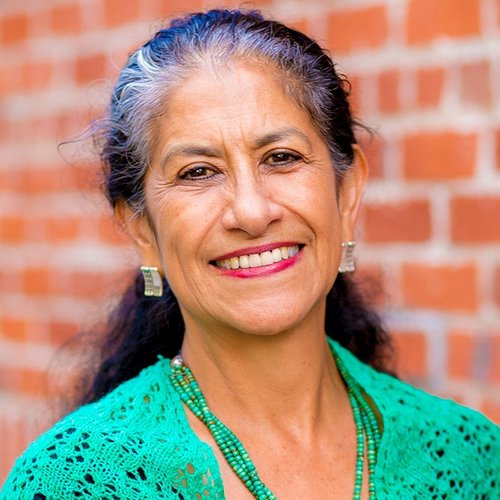
Maria Echaveste
President of the Opportunity Institute
What impressed you the most about Gov. Newsom’s budget proposal?
More money, while critically needed, is necessary but not sufficient because California’s progress is so often hobbled by implementation problems and illusory accountability. Boosts for mental health, special education, and community schools — as examples — can’t have broad and enduring impact until legislation and regulations force deep integration of all the relevant child-serving bureaucracies. And hold them accountable. We need changes in public policies at the state level to drive the top-to-bottom adoption of support a “Whole Child” approach that results in improved support for children and families and ultimately improved educational outcomes.
Maria Echaveste is president and CEO of the Opportunity Institute, which works to increase social and economic mobility and advance racial equity through partnership and collaboration with those seeking to promote systems change.

Erin Gabel
Deputy Director of External and Governmental Affairs at First 5 California
What impressed you the most about Gov. Newsom’s budget proposal?
The governor’s budget would protect the job of every worker who takes Paid Family Leave — recognizing that the achievement gap, and an opportunity gap for the resources all children need to thrive, starts at birth. This commitment to universal Paid Family Leave, coupled with on-going implementation toward the state’s Universal Preschool goal, are great steps forward in the January budget to prepare all our state’s children to succeed in school and life.
What do you feel is most notably missing, if anything?
After the longest period of economic growth in our state’s history, budget funding for high quality, affordable child care for working families has only just recovered from the Great Recession — not grown to realize a state vision to leverage child care as a two-generation strategy to strengthen families and prevent the achievement gap. If existing state revenues and projected revenue growth are insufficient to serve more children in life-changing child development and care options while their parents work, and pay living wages to preschool teachers, we need to solve this challenge urgently.
Erin Gabel is deputy director of External and Governmental Affairs at First 5 California, a statewide commission focused on children newborn to 5 years old.

Kevin Gordon
President, Capitol Advisors Group
What impressed you the most about Gov. Newsom’s budget proposal?
The actual budget proposal was less impressive than the absolutely amazing performance he gave to the press in a 90-minute display of detail regarding the budget with almost no notes. It demonstrated a command of the content and messaging around the budget that is certainly unmatched by any governor in memory, particularly on education. His greatest challenge with this K-12 budget is that he had to follow himself. His own first budget boldly addressed nearly every major issue school leaders across the state had been articulating for some time.
What do you feel is most notably missing, if anything?
There was much anticipation in the run up to this budget for a second round of funding for those issues where he provided leadership in his first year, including hope for another meaningful shot of general fund support to offset the daunting CalSTRS/CalPERS obligations districts face, a serious new effort to address the shortcomings of the base funding for schools that he so eloquently articulated in last year’s State of the State message, and a greater effort to provide immediate relief to districts with general purpose, fully discretionary one-time dollars. He artfully reasserted many of his initiatives from last year in a way that masked the absence of greater progress on these issues in the proposed new budget. He gets big points for his follow through on special education and meaningful investments in teacher quality, but there is always an endless wish list for what the K-12 budget can address as we start the process for the coming year.
Kevin Gordon is president of Capitol Advisors Group, a team of experts in California politics, education policy and finance, legislative strategy, and public affairs.

Marlene L. Garcia
Executive Director of the California Student Aid Commission
What impressed you the most about Gov. Newsom’s budget proposal? What do you feel is most notably missing, if anything?
We look forward to working with the governor and the Legislature in the coming weeks and months on a comprehensive modernization of our state financial aid system that reflects the reality of today’s student experience and makes the dream of pursuing a higher education a reality for all California students.
Today’s students require financial support to cover living expenses and the cost of attendance. To achieve California’s goal of developing its career-ready workforce of tomorrow, there is still more work that needs to be done. Governor Newsom’s 2020-21 state budget proposal moves us closer to achieving that goal.
Marlene L. Garcia is executive director of the California Student Aid Commission, the principal state agency responsible for administering financial aid programs for students attending public and private universities, colleges, and vocational schools in California.

John Gray
President and CEO of School Services of California
What impressed you the most about Gov. Newsom’s budget proposal?
In many ways, he appears to want to sustain the prudence of the Brown era. We saw this in his first budget and we are once again seeing it in his proposed 2020 budget as he takes the more conservative approach of investing in one-time initiatives that, while often bold, do not overcommit the state to obligations that may be unsustainable in a slowing or contracting economy. Moreover, his choices signal a thoughtful deliberation of what he believes to be high-leverage short-term investments that will yield benefits well into the future. This laudable approach is sensible.
What do you feel is most notably missing, if anything?
Beyond the cost-of-living adjustment to the LCFF and a promising start to conversations on how we resource and serve students with disabilities, the budget provides little discretion to continue and expand local innovations. While we appreciate the intention behind the one-time investments Governor Newsom proposes this year, the resources they encumber divert our ability to strengthen and improve core educational programs that serve all students and that improve the teaching and learning environment across California’s broad and diverse education system. Augmenting a core system that is vulnerable to fiscal shocks with one-time, targeted investments — however just and bold — causes us pause.
John Gray is president and CEO of School Services of California, a business, financial, management, and advocacy resource for educational agencies in California.

Gary K. Hart
Secretary of Education under Gov. Gray Davis from 1999-2000
What impressed you the most about Gov. Newsom’s budget proposal?
I am most impressed by the governor’s extraordinary financial commitment to teacher recruitment with a focus on targeted funds for high-need subjects, low-performing schools and a more diverse teaching force. In this regard, the significant expansion of funding for innovative teacher training programs such as teacher residencies and career pathways for classified employees is especially noteworthy.
What do you feel is most notably missing, if anything?
Two concerns: First of all, teacher retention is at least as difficult as teacher recruitment. New teachers need professional support to be successful, especially in challenging schools and difficult teaching assignments; unsuccessful teachers leave the profession and account for quite a bit of our ongoing teacher shortage. Second, will these Newsom initiatives be maintained when state budgets aren’t so flush? The history of California support for teacher recruitment and professional development is such initiatives are not sustained over time.
Gary K. Hart served as secretary of education under Gov. Gray Davis from 1999-2000.
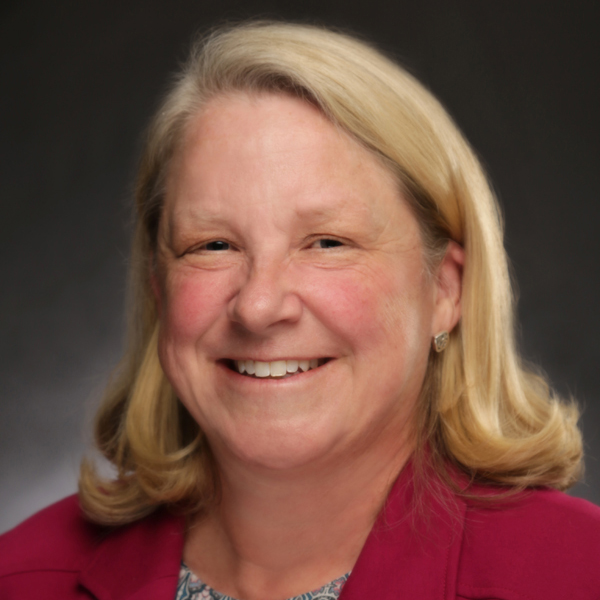
Celia Jaffe
President of the California State PTA
What impressed you the most about Gov. Newsom’s budget proposal?
PTA was impressed by the proposals supporting our youngest Californians — measures including family leave, early childhood education, and programs assisting families in poverty.
What do you feel is most notably missing, if anything?
For the current year, additional General Fund money to offset massive increases in pension costs would provide all school districts with some financial relief. Many school districts are having to make budget cuts as the costs of running schools continue to rise. We urge the governor and the legislature to create a long term plan to bring education funding to the level of the top 10 performing states because despite a robust economy in California, funding for our schools maintains the status quo. That is simply not good enough. California students deserve better.
Celia Jaffe is president of the California State PTA, which connects families, schools and communities to drive improvements in the education, health and well-being of all children and families.
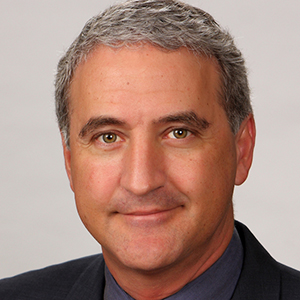
Jonathan Kaplan
Senior Policy Analyst at the California Budget and Policy Center
What impressed you the most about Gov. Newsom’s budget proposal?
Governor Newsom deserves credit for proposing significant funding for programs designed to attract and retain K-12 educators. As the Budget Center noted in our First Look analysis, the governor proposed more than $500 million for recruitment and preparation programs. These dollars would support both new and existing programs that could help address the challenge school districts continue to face meeting the demand for teachers, especially in hard-to-staff subject areas such as bilingual education. By providing current educators additional support, the governor’s proposal to increase professional development funding by more than $350 million also recognizes the critical challenge turnover presents for maintaining a qualified educator workforce and could help retain teachers in the classroom.
What do you feel is most notably missing, if anything?
The governor’s proposals prioritize some of these proposed funds for so-called “high-need” schools and communities. Given the challenges faced by students from low-income families and those who speak a language other than English at home, a key issue to watch as these proposals are debated in the coming months is whether they are crafted to increase the number of educators that teach students who need the most support.
Jonathan Kaplan is a Senior Policy Analyst with the California Budget and Policy Center, which seeks to inform state budget and policy debates by publishing timely analyses and commentary; providing invited testimony at legislative hearings; offering regular trainings on the state budget process and fostering civic engagement, and providing public education as well as customized technical assistance.

John Kim
Executive Director of Advancement Project California
What impressed you the most about Gov. Newsom’s budget proposal?
This year’s budget proposal and the early actions of this administration give us hope that help is on its way for communities long left behind or disinvested in. Advancement Project California is ready to work with Governor Newsom to ensure budget allocations reach the highest need communities with new, data-driven mechanisms that have been proven to get the help where it’s most needed.
What do you feel is most notably missing, if anything?
At the same time, this state has had one arm tied behind its back for the past 40 years with the imposition of Proposition 13 which has transformed California from the Golden State to a state of perpetual crisis. Therefore we are excited to work with the administration to finally close the corporate tax loopholes and bring $12 billion back to our schools and communities through the Schools and Communities First Initiative.
John Kim is executive director of the Advancement Project California, a next-generation, multiracial civil rights organization that works to expand opportunities in our educational systems, create healthy built environments and communities, develop the connective tissue of an inclusive democracy, and shift public investments towards equity.

Ted Lempert
President of Children Now
What impressed you the most about Gov. Newsom’s budget proposal?
We applaud the Administration’s whole child focus and that the proposal includes some key investments. Notably, the proposal takes some important steps towards addressing areas of greatest need, including professional development, special education, STEM and community schools. We’re also excited that the proposal acknowledges the need to improve fiscal transparency in order to ensure California’s most vulnerable students actually receive the benefit of the equity funding that was the intent of the Local Control Funding Formula. The proposed funding to provide easier access to statewide data and increase accountability for supplemental and concentration funding indicates alignment with Assemblymember Weber’s AB1834 and AB1835.
What do you feel is most notably missing, if anything?
California ranks near the bottom of the country on nearly all indicators of child well-being. Not using this year to substantively expand access to high quality early childhood education programs would be a real disappointment, as well as not investing more in K-12. The documented need in early ed is in the billions to ensure equitable access, but this proposal barely makes a dent, even though we are in a strong budget position. Regarding K-12, the state shouldn’t just fund schools using a formula that was intended to be a floor and not a ceiling.
Ted Lempert is president of Children Now, a national research and advocacy organization based in Oakland.

Sarah Lillis
Executive Director of Teach Plus California
What impressed you the most about Gov. Newsom’s budget proposal?
We are thrilled to see the governor’s proposal for significant investment in our teaching force. We agree that the biggest achievement boost will come with well-prepared, well-supported teachers that better reflect the students they teach. How can you help but be excited about an additional $900 million going to recruitment, preparation and professional development for teachers?
What do you feel is most notably missing, if anything?
If these investments are to ensure that every child in California has a well-prepared, well-supported and effective teacher in their classroom, we hope that the governor also invests in strengthening the system for evaluating their impact. In our current system, we do not have comprehensive, understandable information on the effect programs have on diversity, retention or teacher distribution. We also hope that the governor’s interest in a more diverse teaching force translates into explicit goals for these programs to produce a teaching force more reflective of the students in California.
Sarah Lillis is executive director of Teach Plus, a nonprofit organization that trains teachers for leadership roles.
Teach Plus is a nonprofit organization that trains teachers for leadership roles.
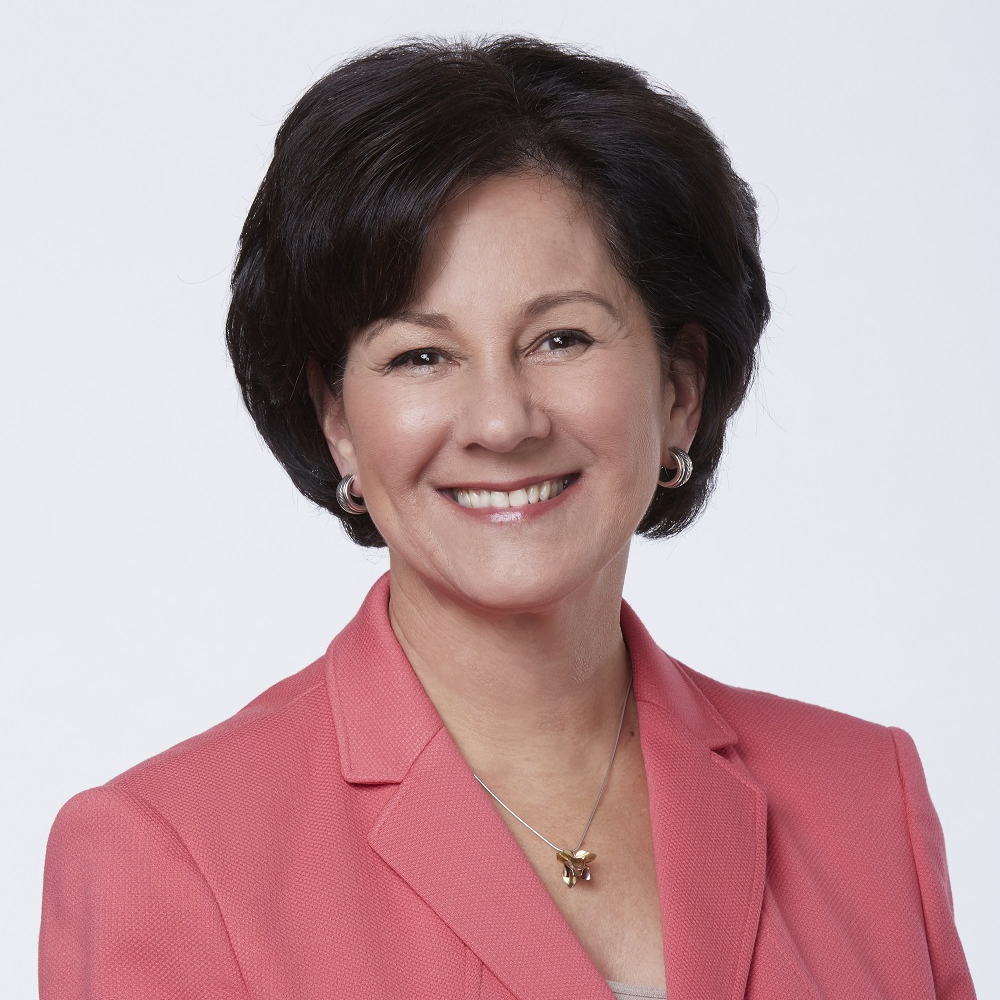
Monica Lozano
President and CEO of the College Futures Foundation
What impressed you the most about Gov. Newsom’s budget proposal?
We’re pleased to see commitments to close equity gaps and promote socioeconomic mobility: expanded capacity at UC and CSU that will meet student and workforce demand for four-year degrees, and at community colleges, efforts to improve faculty diversity and increase services for undocumented students and those struggling with food insecurity. The budget also recognizes the importance of coordinated regional efforts to improve degree and career pathways, with more funding for the Fresno Integrated K-16 Education Collaborative. Continuing budget discussions should center on ensuring that all students have an opportunity to earn a college degree, regardless of their income, race or zip code.
What do you feel is most notably missing, if anything?
California is appropriately growing reserve funds against the potential threat of a recession, and we hope that similar safeguards can be considered for higher education. The state should explore creating a stabilization fund that could be accessed to protect students from abrupt tuition increases and severe cuts in services. The funds could be restricted in exchange for higher education institutions meeting certain accountability and efficiency metrics such as cost reductions and improved time to degree, which would help increase capacity. Whatever the details, students should no longer have to bear the consequences of our failure to plan.
Monica Lozano is president and CEO of the College Futures Foundation, which works to catalyze systemic change, increase college degree completion, and close equity gaps.
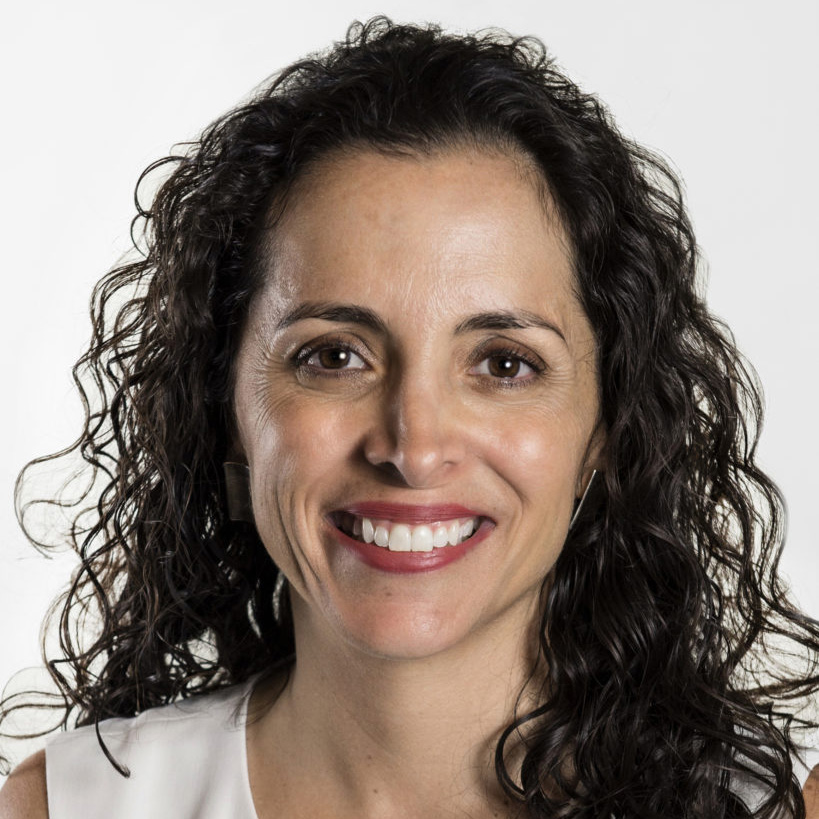
Patricia Lozano
Executive Director of Early Edge California
What impressed you the most about Gov. Newsom’s budget proposal?
Governor Newsom’s proposal to create a Department of Early Childhood Development aligns with his whole child/whole family vision for California. Its aim to simplify a complex system will improve service delivery for young children, families and providers. It’s an opportunity to promote a high-quality early childhood system that coordinates with other services including health, home visiting, child welfare and family support. Yet, we must ensure services for children and families aren’t disrupted — making the creation of a transition team so important. The new department must also factor in seamless interagency collaboration to ensure consistent care for families beyond early childhood.
What do you feel is most notably missing, if anything?
We understand that the new Department of Early Childhood Development and the Master Plan are big investments in infrastructure and we are hopeful that the outcomes of these two initiatives will yield better programs. The investment this year compared to the governor’s first year is much more modest. However, we were pleased to see that he remains committed to directing cannabis tax revenue to support early childhood.
Patricia Lozano is executive director of Early Edge California, an advocacy organization focused on advancing policy changes and investments that will expand high-quality Early Learning programs for all children from birth to age 8.

Bill Lucia
President and CEO of EdVoice
What impressed you the most about Gov. Newsom’s budget proposal?
With $900 million for teachers to address skills, acute shortages, and distribution in high-poverty schools, the 2020-21 budget recognizes an important state role in ensuring every school works well for every child. Perhaps even more impressive than his command of detail, Newsom shared publicly a sound theory of action — double down on what works, abandon investments that don’t, and promote transparency to know the difference. This will avoid the pre-LCFF snare that resulted in billions of dollars that grew into glaciers of calcified state and local bureaucracy moving slowly and getting nowhere close to the kids or the results intended.
And what do you feel is most notably missing, if anything?
No inmate forgot to read in prison. When it comes to what works teaching kids to read, even the most disadvantaged and struggling, science has the answer — start early with every child, use effective science-based instructional techniques and curriculum and screen all kids for being at risk of dyslexia. To close the school-to-prison pipeline and break the chains for thousands, the state must ensure all teachers know the proven science of what works for all kids, and screen every child early so their parents and teachers can get them the help they need and be put on trajectories for success.
Bill Lucia is president and CEO of EdVoice, a nonprofit organization advocating for policies to increase measurable student achievement for all students in California and eliminate inequality of educational opportunity in public schools.

Jessica Maxwell
Deputy Director of FosterEd California
What impressed you the most about Gov. Newsom’s budget proposal?
We were thrilled to see the governor’s continued focus on improving the overall quality K-12 education. Specifically, we are excited to learn about the governor’s wellness in schools funding proposals for adverse childhood experience training and the expansion of community schools. However, we would have liked to see a specific carve out of $40 million for school-based health Center expansion. Only 2 percent of California schools sites currently have a school-based health center, which is a core component of ensuring schools can provide students and their families access to adverse childhood experience (ACE) screenings, primary and preventive health care and behavioral health services. Without a school-based health center expansion, there will be a dearth of qualified health professionals meeting students where they spend most of their time – in schools – and the schools as wellness centers initiative will likely fall short of its goals.
What do you feel is most notably missing, if anything?
Unsurprisingly, there were large fiscal investments to address the homelessness and housing crisis. Given the large number of children experiencing homelessness (274,000 in 2018/19), we were disappointed to see no clear investments into the education of homeless students. The November state audit on the McKinney Vento program identified the clear challenges local education agencies face in identifying homeless students, yet the state does not provide any concentration or supplemental funding for McKinney Vento. California should make a state investment by matching dollar-for-dollar federal funding (a modest $11 million) to establish technical assistance centers and expand grants to local education agencies to provide crucial support services to address the identification, chronic absenteeism rate and overall educational performance of homeless students.
Jessica Maxwell is deputy director of FosterEd California, a initiative of the National Center for Youth Law, that works to help youth in foster care, under the jurisdiction of probation or experiencing homelessness, succeed in school and beyond.

Assemblymember Kevin McCarty, D-Sacramento
Chair of the Assembly Budget Subcommittee on Education Finance
What impressed you the most about Gov. Newsom’s budget proposal?
The governor’s proposed 2020 budget provides a solid starting point — both in providing record rainy day reserves and making necessary investments for the future in areas like P-16 education, housing/homelessness, and health care.
As Chair of the Assembly Budget Subcommittee on Education Finance, I’m especially optimistic about the new proposals related to increased school funding, teacher training and recruitment, and supporting low-performing schools. I’m very encouraged by the governor’s continued commitment to early education with his phased-in universal preschool proposals, but it’s important to note that we need to do much more to fund our California child care system. With regard to higher education, the budget stabilizes the UC/CSU systems, but we’ll look to do more to expand enrollment and college financial aid.
Kevin McCarty, D-Sacramento, is chairman of the Assembly Budget Subcommittee on Education Finance.
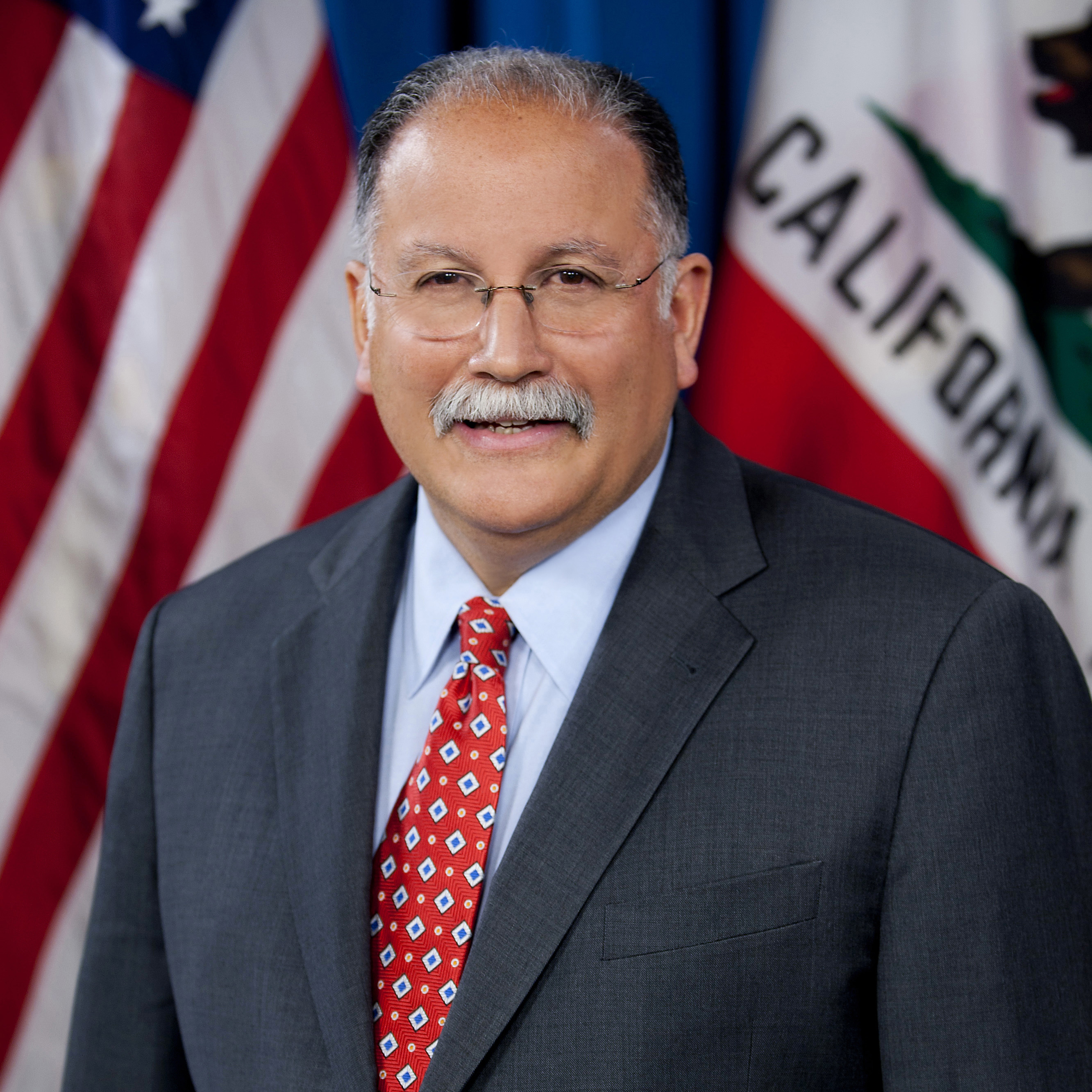
Assemblymember Jose Medina, D-Riverside
Chair of the Higher Education Committee
What impressed you the most about Gov. Newsom’s budget proposal?
I applaud Governor Newsom for increasing ongoing funding for the University of California, California State University and California community colleges. These investments are much needed and critical to keeping California’s institutions of higher education a pinnacle of excellence. I am also thrilled that the proposal included significant investment to improve access to health care in the Inland Empire through enrollment growth at the University of California, Riverside School of Medicine. The Inland Empire has historically lacked access to quality care. The budget proposal will double student enrollment at UC Riverside School of Medicine and support residents.
What do you feel is most notably missing, if anything?
I was disappointed in the lack of investment in financial aid. California needs to do more to address the rising costs of college. We know that the cost of tuition is not the only financial burden students face and that college is not truly “free” until we can fully compensate the total cost of attendance. I will continue to advocate for comprehensive Cal Grant reform in order to ensure we are meeting the needs of California’s most financially disadvantaged students first.
Jose Medina, D-Riverside, is chairman of the Higher Education Committee of the California State Assembly.

Hanna Melnick
Research analyst and policy advisor at the Learning Policy Institute
What impressed you the most about Gov. Newsom’s budget proposal?
The Administration’s proposed 2020 budget builds on educational progress made in 2019 when it increased research-informed investments in early childhood and K-12 education, advancing steps taken last year to expand children’s access to child care and preschool and the access their teachers and caregivers have to learning opportunities to enhance their knowledge and skills. These steps are critical in ensuring that each of the state’s children has access to high-quality learning opportunities in their formative years.
What do you feel is most notably missing, if anything?
Last year, the Administration made record-breaking investments in early education initiatives — laying the foundation for an accessible, high-quality early learning system. The 2019 Master Plan for Early Learning and Care, which is informed by research and community input, includes a commitment to invest in developing a high-quality early learning workforce. Because the master plan process is still unfolding, it is premature to say anything is missing. In fact, the plan holds promise for fostering the development of the kind of high-quality, diverse early care and education workforce and early learning system that research shows sets children up to succeed in kindergarten and beyond.
Hanna Melnick is a research analyst and policy adviser at the Learning Policy Institute, which conducts and communicates independent, high-quality research to improve education policy and practice.

Jen Mishory
Senior Fellow at The Century Foundation
What impressed you the most about Gov. Newsom’s budget proposal?
Governor Newsom’s proposed budget includes welcome supports and protections for student borrowers — in particular, the proposed student loan working group and the newly renamed and empowered Department of Financial Protection and Innovation (formerly the Department of Business Oversight). The working group could make real strides in ensuring students are able to access the supports, repayment and forgiveness options available to them, and the department has the potential to be an important safeguard against false advertising by predatory for-profit colleges and lenders.
What do you feel is most notably missing, if anything?
Over the past several years, numerous stakeholders and legislators have called for a large-scale increase in financial aid for non-tuition costs, and to remove eligibility requirements to receive a Cal Grant. The California Student Aid Commission has convened a working group to further those efforts, and we expect their recommendations out this spring — but in the meantime, the governor’s budget missed an important opportunity to include a down payment toward an overhaul and expansion of the Cal Grant.
Jen Mishory is a senior fellow at The Century Foundation, which researches models that promise to achieve greater racial and socioeconomic diversity and close the higher education gap.
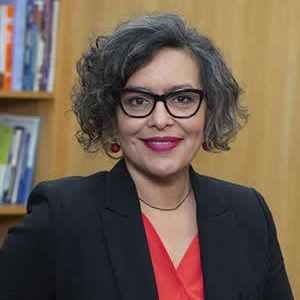
L. Karen Monroe
Alameda County Superintendent of Schools
What is your overall impression of Gov. Newsom’s budget proposal?
Governor Newsom understands the pressures that inadequate funding is placing on California school districts and we are very encouraged that he is willing to work to put more money into K-12 education. But even more investment is needed. The incremental funding increases of the past two years do not keep pace with the increased expenses districts are experiencing. Costs continue to rise. California continues to rank in the bottom half of the country in many areas, including per-pupil funding, pupil-to-teacher ratios and overall school staffing levels. Our state cannot afford to continue to shortchange our public education system, potentially handicapping generations of young people as they take their place in this global economy.
L. Karen Monroe is superintendent of the Alameda County Office of Education.

Pedro Noguera
Distinguished Professor of Education at the Graduate School of Education and Information Studies and Faculty Director for the Center for the Transformation of Schools at UCLA
What impressed you the most about Gov. Newsom’s budget proposal?
The governor’s focus on education in the new budget shows that he understands the importance of keeping it a priority. Addressing the teacher shortage, particularly in math and science, is critical, and so is his focus on and expanding access to preschool and community schools. California has under-funded its schools for many years so it will not be possible for the governor to reverse direction and bring about the improvements needed quickly. However, through strategic investments in critical areas he can make a difference. This budget represents several positive steps in the right direction. Let’s hope he recognizes that there are still several more steps to be taken.
Pedro Noguera is Distinguished Professor of Education at the Graduate School of Education and Information Studies and Faculty Director for the Center for the Transformation of Schools at UCLA.

Christina Nitsos
First Grade Teacher at Lafayette Elementary School, Lafayette School District
What impressed you the most about Gov. Newsom’s budget proposal?
Governor Newsom’s proposed budget recognizes the many challenges and funding deficiencies facing school districts across California. In particular, the proposed budget correctly highlights that educational programs for students with disabilities are woefully underfunded. Just as my colleagues across California strive to meet the needs of our diverse student populations through inclusive practices, I partner with special education experts to identify appropriate accommodations and extra support for students. Most importantly, our students with disabilities need skillful teachers and specialists working collaboratively to improve outcomes. Governor Newsom’s proposed budget recognizes the critical nature of our work.
What do you feel is most notably missing, if anything?
The 2019 budget included a historic increase of $645 million for special education. While the 2020 budget proposes an additional $250 million for preschool-age children with disabilities, along with an additional $4 million one-time money for dyslexia research and training, this is not nearly enough. This represents about 1 percent of the overall education budget, when nearly 11 percent of our students have special needs. The state and federal government have contributed less than 40 percent of the costs for special education services. The remaining 60 percent comes from local school districts. While this is a first step, it is not nearly enough.
Christina Nitsos teaches first grade at Lafayette Elementary School, in Lafayette, California and is a 2019-20 Teach Plus Senior Policy Fellow.
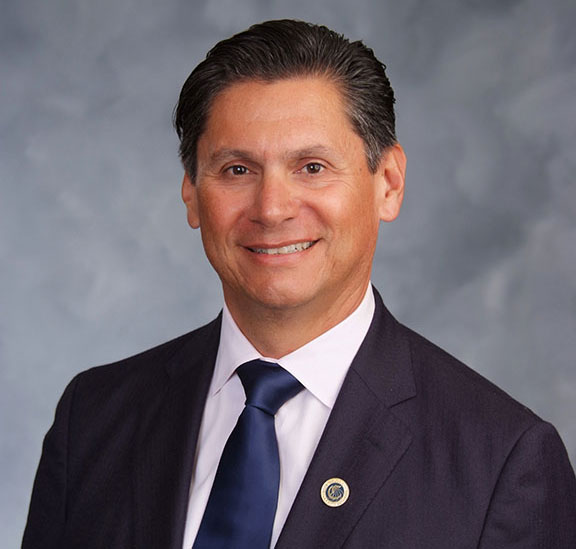
Eloy Oakley
California Community Colleges Chancellor
What impressed you the most about Gov. Newsom’s budget proposal?
This year’s budget provides strong support for community colleges and continues to be aligned with the priorities and values outlined in the Vision for Success. This year, the governor has laid out an ambitious plan to address the state’s homeless problem in a humane and holistic way that involves a significant investment of state resources. Basic needs will remain a priority focus for our colleges, and the governor’s budget allocates additional funding to combat hunger among our students. The budget continues the phased-in implementation of the Student Centered Funding Formula, which is a cornerstone for achieving the goals of our Vision for Success, which seeks to close equity gaps and increase completion. The plan provides additional resources to support the implementation of the Student Centered Funding Formula, which incentivizes enrollment of low-income students and supports student completion. The plan would also expand apprenticeship and work-based learning opportunities for students, help us ensure our faculty better represents the rich diversity of our students, provide much needed assistance to our undocumented students.
What do you feel is most notably missing, if anything?
While the budget proposal does not include funding for increased need-based student financial aid, the administration has signaled that it eager to consider the conclusions and recommendations of a working group convened by the California Student Aid Commission to study Cal Grant reform. Financial aid reform continues to be a priority for our office; for low-income students, the net price of attending community college is often higher than UC or CSU because too few resources are directed to support students non-tuition costs. We will also continue to push for additional resources to support educational programming for currently and formerly incarcerated students, to support mental health services for community college students and to support the hiring and professional development for faculty and staff. We will continue to work with the administration and Legislature on these and other priorities as we approach the May budget revision.
Eloy Oakley has served as chancellor of the California Community Colleges since December 2016.

Assemblyman Patrick O’Donnell, D-Long Beach
Chair of the Education Committee
What impressed you the most about Gov. Newsom’s budget proposal?
Governor Newsom’s proposed budget is a good starting point. I am pleased to see an increase in educational funding for teacher professional development and special education. We should prioritize funding to address the California teacher shortage. With regard to special education, I look forward to discussions on establishing a fair funding system and how best to support students with disabilities.
What do you feel is most notably missing, if anything?
I remain concerned that we are not driving more dollars to the classroom. It is imperative that we increase the cost of living adjustment beyond the suggested 2.29 percent the governor has proposed. The legislature and the governor need to stop treating Prop 98 funding as a ceiling and instead treat it like a floor by committing a larger amount of money to the base allocation. I will be a strong advocate to ensure that general fund money is used to pay down our long-term debt, such as CalPERS and CalSTRS. Paying down long-term debt has long-term benefits.
Patrick O’Donnell, D-Long Beach, is chairman of the Assembly Education Committee.
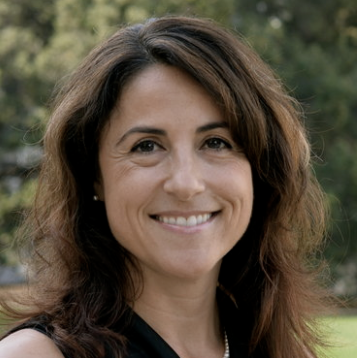
Jennifer Peck
President and CEO at the Partnership for Children and Youth
What impressed you the most about Gov. Newsom’s budget proposal?
The governor’s proposal to fund community schools is encouraging. The proposed planning dollars are necessary for schools and their partners to develop better systems for addressing the range of needs that kids and families have. This strategy also helps schools get better at leveraging existing resources through partnerships with community-based organizations and other public agencies — and by maximizing state and federal dollars for a range of student support services like mental health. California has a proud community schools history to build on going back to Healthy Start, from which a lot of lessons can be drawn about how to grow and sustain local partnerships for student success.
What do you feel is most notably missing, if anything?
This budget failed to include critically needed funding for afterschool programs, essential to California’s strategy to alleviate poverty and support the whole child. Given that afterschool programs were a key issue in the governor’s campaign, there is great disappointment that for the second year in a row, there’s been no proactive move to address the financial crisis facing afterschool programs — programs that serve half a million students every day, and that have proved successful in boosting student learning. These programs also serve a critical child care need for working families. We believe it’s short-sighted not to invest in our state’s afterschool programs, an important platform for many of the governor’s priorities.
Jennifer Peck is president and CEO of the Partnership for Children & Youth, an advocacy and capacity-building organization championing high-quality learning opportunities for underserved youth in California, with an emphasis on after school, summer learning, and community schools.

Arun Ramanathan
CEO at Pivot Learning
What impressed you the most about Gov. Newsom’s budget proposal?
I’m thrilled the governor is investing more funding in education, and even more thrilled by his leadership in priority-setting. Before LCFF, there was a categorical program for everything. Local control solved that, but it wasn’t intended to remove the governor’s role in leading an education agenda — one reason why our student results in math and English are so poor. We need direction and focus on important levers such as curriculum and instruction. With this budget, the governor appropriately sets priorities in teacher training, improving high-need schools and special education. Now, the administration has the chance to lead in how to achieve those priorities, learning from the best work happening in California and other states.
Arun Ramanathan is CEO of Pivot Learning, a nonprofit organization whose mission is to partner with educators to design and implement solutions to their greatest challenges in achieving educational justice.

Karn Saetang
Alliance and Policy Director at Californians for Justice
What impressed you the most about Gov. Newsom’s budget proposal?
We’re excited to see Governor Newsom pursuing an overall equity approach to his education budget. It’s promising to see big ticket items focus on addressing key issues that are hitting low-income schools and students of color the hardest. By prioritizing funding for high-needs groups and special education, he’s sending an encouraging signal to many of our most-impacted communities. We were especially impressed that Newsom is clear about the racial disparities within our education system, and that the breadth and complexity of what California students need to succeed require both a systems and adaptive approach. We’re encouraged by the continued attention to prioritizing low-performing and low-income school districts and the dedication to addressing the state’s teacher shortage. Investing $900 million in staff development, particularly for training in supports for English Learners, social emotional learning and restorative practices is a crucial move as these areas have disproportionately impacted Black and Brown youth in California and the funding will work to address some of these historic wrongs.
What do you feel is most notably missing, if anything?
We’d like to see some long-term commitments — like the $300 million for community schools — go further and be presented as on-going funding rather than one-time allocations, but after 40 years of disinvestment in California schools, this proposed budget, along with initiatives like Schools and Communities First, are a good step in the right direction and present a good down payment towards a fully funded CA public education system. After this budget, there still remains the $30 plus Billion question: will California match its money with its values and fully fund our public education system?
Karn Saetang is alliance and policy director at Californians for Justice, a statewide youth-powered organization fighting for racial justice.

Varsha Sarveshwar
President of the University of California Student Association
What impressed you the most about Gov. Newsom’s budget proposal?
I’m excited about the strong investment in University of California students. Governor Newsom’s proposed 5.8% permanent funding increase for UC will go a long way toward the affordability, accessibility and quality of a UC education for current and future students. And we’re especially excited about the governor’s proposal to extend the UC Summer Financial Aid program, which helps students graduate on time, to 2023.
What do you feel is most notably missing, if anything?
Moving forward, we hope to work with the governor to incorporate financial aid reform in the final budget. While the Cal Grant program does a great job covering our low-income students’ tuition and fees, it leaves those students struggling to pay for non-tuition costs, such as housing, food and books. Addressing the total cost of attendance is key to fighting housing and food insecurity on our campuses.
Varsha Sarveshwar serves as the president of the University of California Student Association and is a senior majoring in political science at UC Berkeley.

Michele Siqueiros
President of the Campaign for College Opportunity
What impressed you the most about Gov. Newsom’s budget proposal?
A first amongst governors of the state, Governor Newsom spoke about the need to intentionally address racial disparities in college access, success and affordability and his expectation that budget investments be used to do so. The California budget is a statement of values and Governor Newsom has boldly told our public colleges and universities that tackling racial disparities in access and completion while expanding diversity and inclusivity in hiring faculty and staff must be a top priority. The governor should be applauded for his focus on investing in higher education, addressing racial equity gaps, college affordability, underserved regions and vulnerable populations including undocumented students.
And what do you feel is most notably missing, if anything?
What the governor and Legislature now have the opportunity to do is to solidify the values espoused in the proposed budget by setting a statewide college attainment goal and strengthening higher education and K-12 collaboration through an official coordinating body. We also remind our leaders of the need for financial aid reform and further investment to expand college access for more Californians; every dollar expended on higher education yields a huge return on investment.
Michele Siqueiros is president of the Campaign for College Opportunity, a coalition of business, labor, ethnic and religious groups, and civic organizations all working together to ensure that California’s next generation of students had the opportunity to attend college.
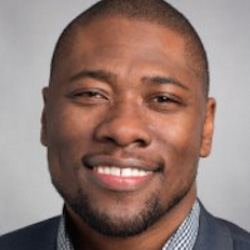
Ryan J. Smith
Chief External Officer at Partnership for Los Angeles Schools
What impressed you the most about Gov. Newsom’s budget proposal?
There’s a lot to applaud in the proposed budget, particularly for early education. Governor Newsom seems to be forging a path that does what many stakeholders have asked our state’s top leaders to do for years — to couple local control with a recognition of the crucial role state investments and initiatives need to play to address educational disparities.
I’m also pleased to see Governor Newsom propose investments in our educator workforce. Recently, the Partnership for LA Schools joined dozens of other organizations to urge the administration to prioritize the capacity building of high needs schools and districts on issues like restorative justice and English learner supports. I’m happy to see the governor heed that call. I’m also excited about the proposed investments in teacher residency programs throughout the state, which I believe if implemented effectively, can strengthen the pipeline of teachers teaching in under-resourced schools and districts.
And what do you feel is most notably missing, if anything?
As we move closer to celebrating Black History Month, I’m reminded of Frederick Douglass’ quote, “Once you learn to read, you’ll be free forever.” Given the alarming fact that 58 percent of 4th grade black students scored below proficient in reading in California and that math gaps are growing for black students, we must target even more resources to eliminate disparities for black and brown students statewide for us to realize equity in this generation.
I’m also grateful for a governor that embraces using education data for innovation and change. The budget seems somewhat silent on the next phase of the Cradle to the Career data system that was championed widely in last year’s budget. I’m looking forward to seeing the following steps and future investments.
Ryan J. Smith is chief external officer for the Partnership for Los Angeles Schools, which manages 18 historically under-resourced Los Angeles Unified School District (LA Unified) schools serving 14,000 students in Watts, Boyle Heights and South LA.
Partnership for Los Angeles Schools is a nonprofit that manages 18 schools in Los Angeles Unified.

Tony Thurmond
State Superintendent of Public Instruction
What impressed you the most about Gov. Newsom’s budget proposal?
I appreciate that even with declining resources, Governor Newsom has found a way to keep education as a key priority in the budget. We look forward to continuing a close partnership with him, the Legislature and stakeholders in the next few years to increase our state’s education resources so that we can close opportunity gaps, and make sure all of California’s students have equitable opportunities to excel.
What do you feel is most notably missing, if anything?
Not missing, but wanting to get more specific on something that was included, in regards to the $900 million for teacher preparation and retention… We believe that students should have teachers that look like them, and so we would love to work with the administration, as they think about how to implement these dollars, to work specifically towards programs that are proven to diversify the teacher workforce.
Tony Thurmond is California’s State Superintendent of Public Instruction.

Michael Wiafe
President of the California State University Student Association
What impressed you the most about Gov. Newsom’s budget proposal?
We appreciate the initial investment outlined in the 2020-2021 budget proposal, but we look forward to continuing to work with the governor and the Legislature to ensure that the final proposal truly addresses the needs of today’s students and provides access to an affordable degree.
Michael Wiafe is a graduating senior at San Diego State University and president of the California State Student Association, representing the students of the California State University system.

Randi Wolfe
Executive Director of Early Care and Education Pathways to Success (ECEPTS)
What impressed you the most about Gov. Newsom’s budget proposal?
What impressed me most is Governor Newsom‘s demonstration of his abiding commitment and long-term vision for expanding and strengthening the early care and education system in California. To that end, expanding child care slots along with expanding child care facilities is crucial. But equally crucial is making sure that the early care and education workforce has the training, compensation and working conditions to provide high quality services. In this regard, the governor’s focus on providing training around trauma-informed care is essential.
What do you feel is most notably missing, if anything?
What is notably missing is a parallel commitment to funding and strengthening the availability of early care and education for our youngest citizens — children from birth through age 3. Until we approach children’s development as a continuum that begins at birth (or before), the potential benefits of a high-quality system of early care and education will never be fully realized. So what is missing is a plan for creating more slots, more facilities and comprehensive workforce development for those who serve the birth-3 population so that California can build and sustain an early care and education system that acknowledges and serves all of its youngest children and those who care for and teach them.
Randi Wolfe is executive director of Early Care and Education Pathways to Success, which works to advance the rigorous professional development and economic well-being of the early care and education workforce.

Edgar S. Zazueta
Senior Director, Policy & Governmental Relations for the Association of California School Administrators
What impressed you the most about Gov. Newsom’s budget proposal?
The Newsom administration’s desire to pursue special education reforms is the most significant part of the proposed education budget. While the state sought to overhaul school finance with the enactment of LCFF under Brown’s leadership, one could argue that special education has been the biggest piece of unfinished business in our state’s education policy. The path to compromises and solutions that work for everyone will not be easy but we admire how the governor is being responsive to one of the biggest education challenges that face of our schools.
What do you feel is most notably missing, if anything?
The education budget contains many targeted investments aimed at critical issues like educator recruitment, professional development for our teachers, and programs aimed at lifting up innovative practices to help our students. With that said, many of our school districts are struggling to simply balance their budgets. Outside of the cost of living adjustments in LCFF, many school districts will not be guaranteed many of the funds proposed in the budget. As the legislature begins their deliberations, we would encourage the policymakers to continue to consider dedicating additional non-Prop 98 funds, as they did last year, to help schools mitigate the cost of CalSTRS and CalPERS obligations.
Edgar Zazueta is senior director, Policy & Governmental Relations, for the Association of California School Administrators.
To get more reports like this one, click here to sign up for EdSource’s no-cost daily email on latest developments in education.










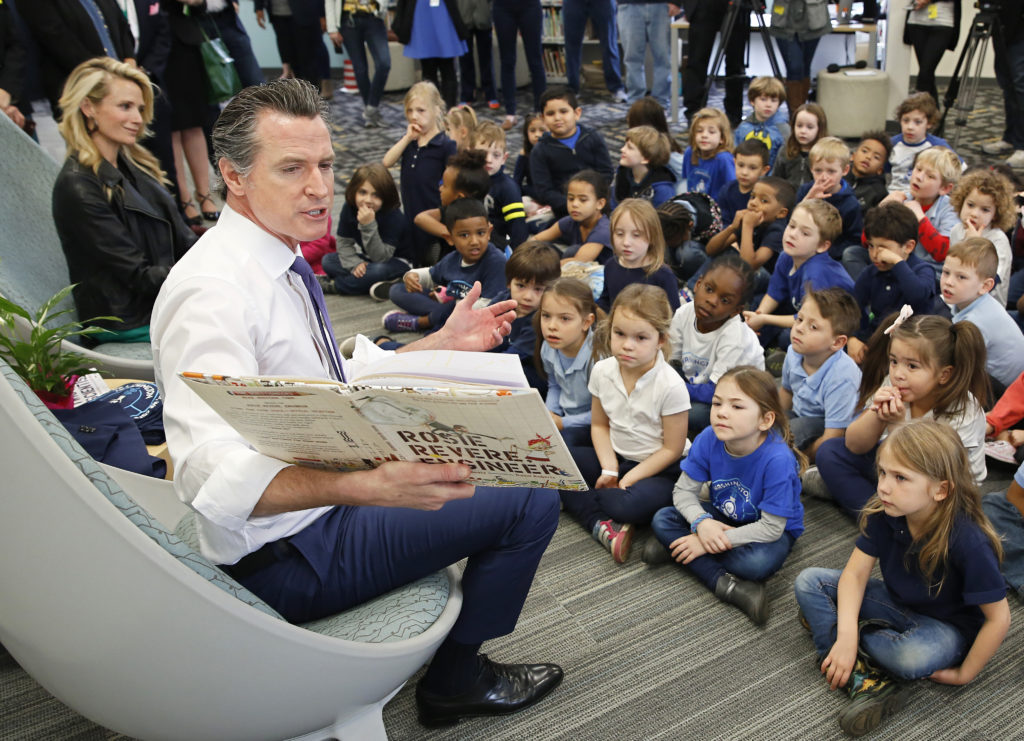
Comments
Comments Policy
We welcome your comments. All comments are moderated for civility, relevance and other considerations. Click here for EdSource's Comments Policy.